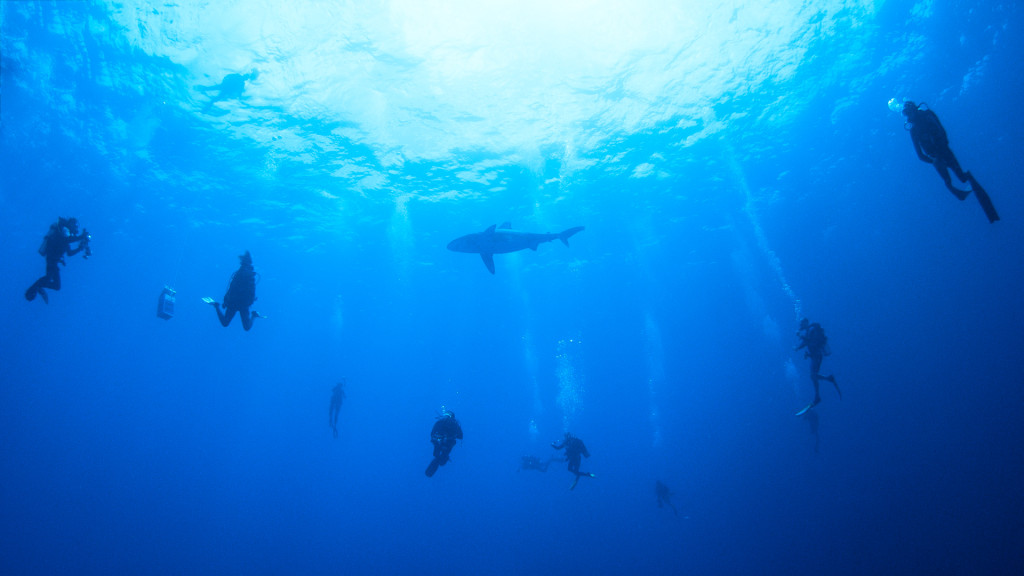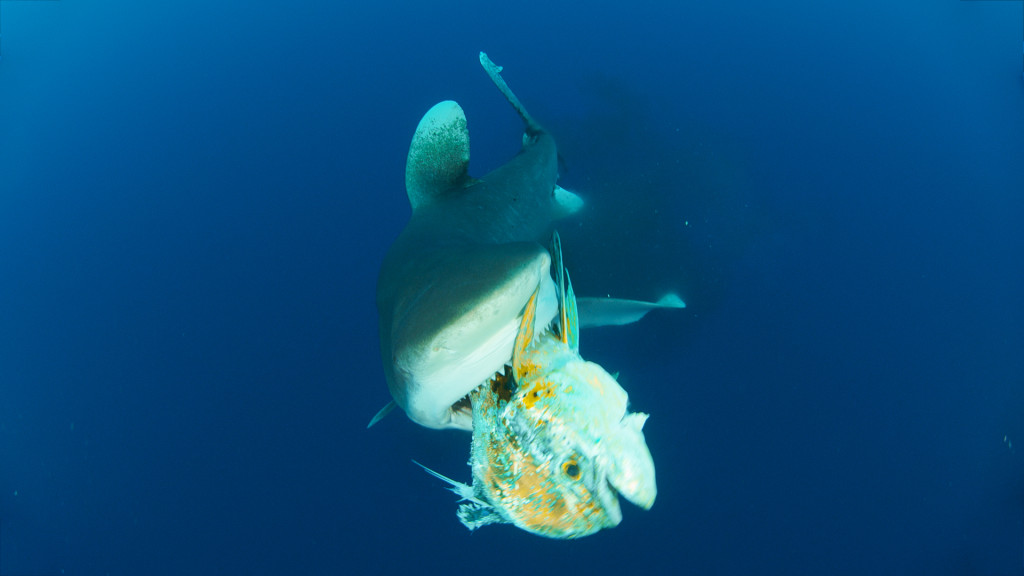By Maija Leivo

Just off the southeastern U.S., the Bahamas is well known to most divers for its shark-filled waters. Here, the limestone topography filters rainwater to remove sediments, which results in spectacular visibility. It’s a near perfect location for sharks: at least 40 different kinds are found here, and they’ve been protected by a full ban on the shark trade since 2011. With about 50 percent of the GDP coming from the tourist trade, lawmakers and officials have recognized the economic value of these apex predators.
While many resorts and guides offer feeding dives with reef sharks, a unique spot off Cat Island brings adventuresome divers face-to-face with oceanic whitetips, a much larger and more elusive creature. Around 10 feet (3m) long, oceanics are streamlined for both long-distance travel and deep diving. They are named for the distinctive white patches on their large, rounded fins.
While filming our new documentary series Bahama Blue, we were lucky enough to get up close and personal with this true pelagic species. It is thought that these predominantly female sharks gather here each year to feed on migrating schools of nutritious tuna as they prepare to mate or give birth.
The congregating sharks have proved a boon for researchers, who were able to tag 10 female sharks and track their movements for 245 days. They were surprised to learn that these sharks traveled within a radius of up to a little over 1,200 miles (2,000 km) and that, collectively, they crisscrossed some 6,200 square miles (16,000 square km) of the Atlantic Ocean. They also discovered that oceanics are powerful divers, plunging to depths of 3,280 feet (1,000 m), likely in pursuit of prey like squid. Interestingly though, they spent about two-thirds of their time in the safety of Bahamian waters.

The journey to swim with the oceanic whitetips is an easy day trip from Cat Island with tour operators like Stuart Cove. Cat Island also has numerous quick flight connections to and from other islands of the Bahamas.
Bahama Blue was produced bay Parallax Films and currently airs in countries around the world. Click here for more details.

